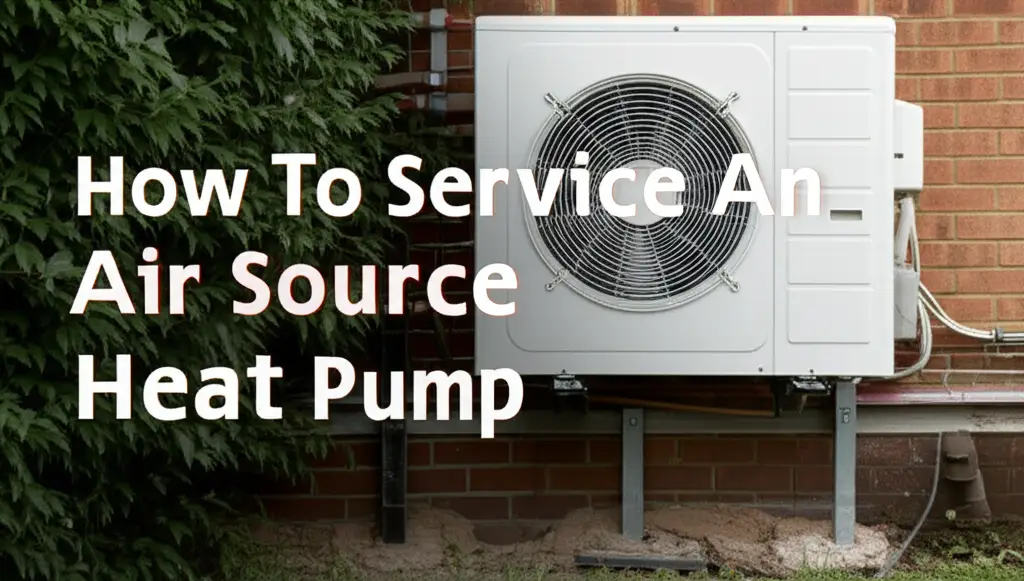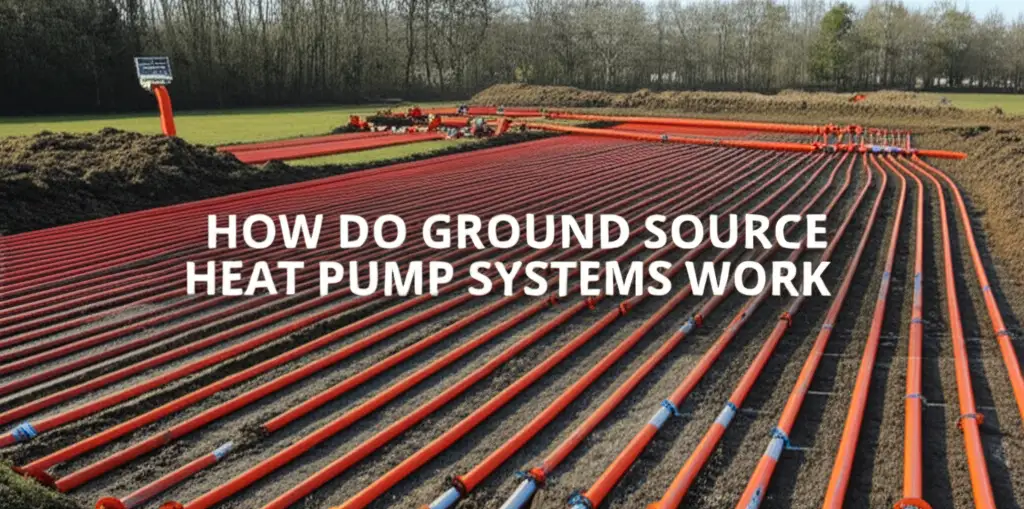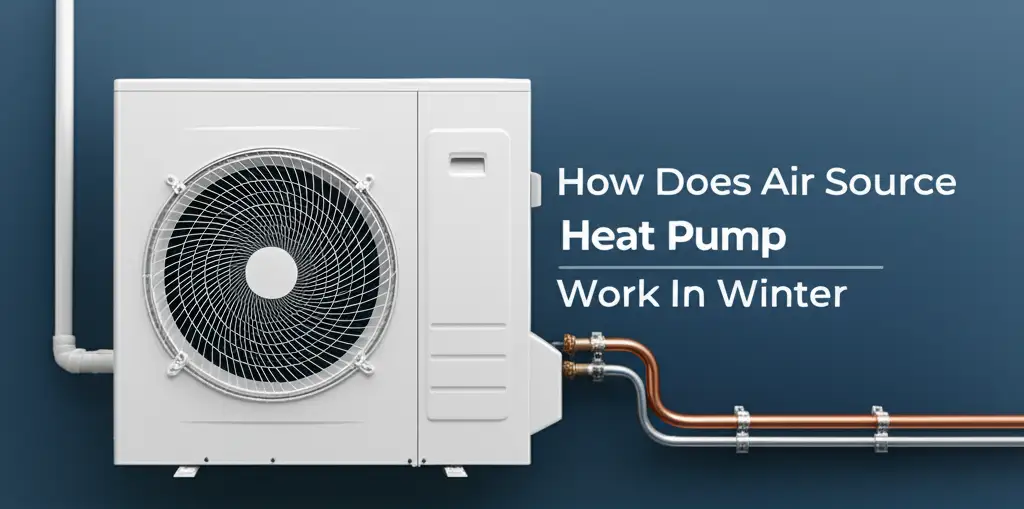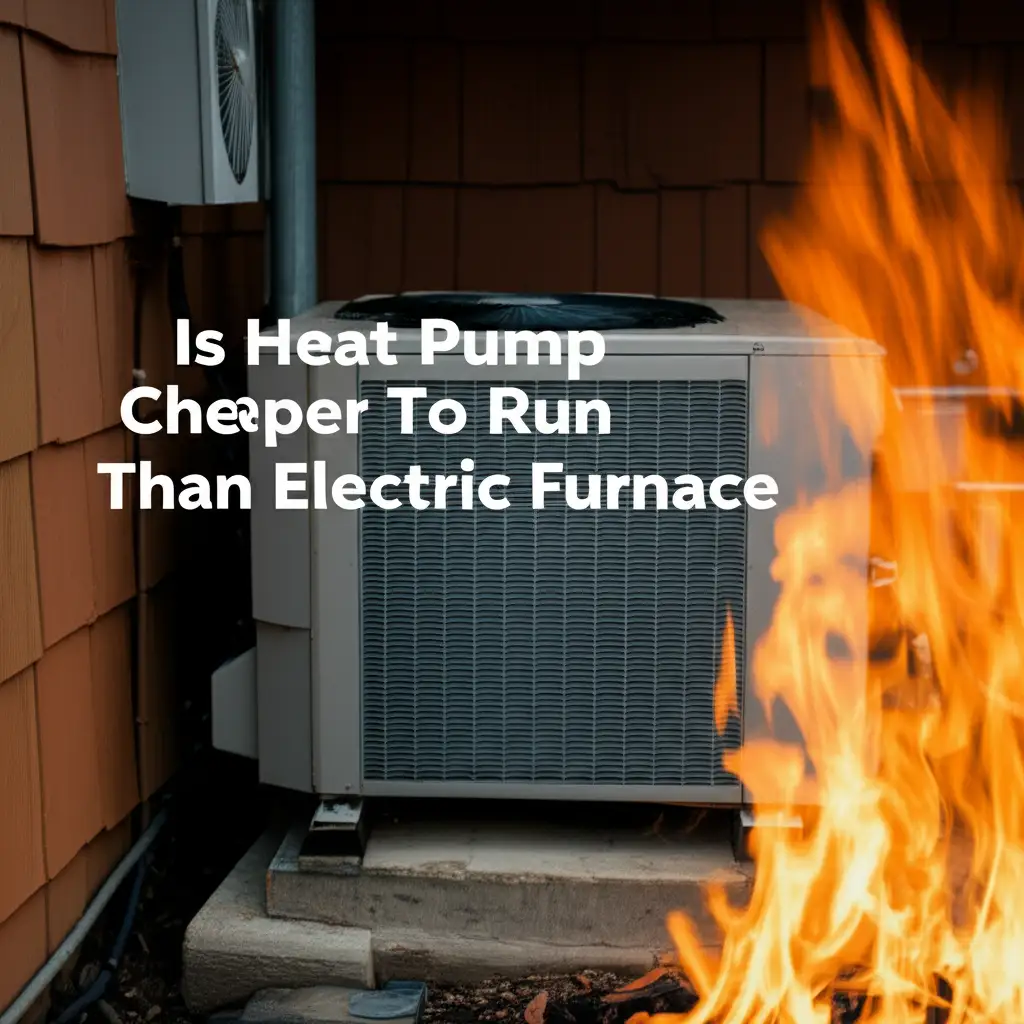· Todd Martin · Home Heating · 22 min read
How To Service An Air Source Heat Pump

Service Your Air Source Heat Pump for Peak Performance
I understand you want to know how to service an air source heat pump. This is a smart move. Regular care keeps your home warm and your bills low. An air source heat pump is a big investment for your home. Taking good care of it makes it last a long time. It also works better and uses less energy.
This article gives you clear steps to service an air source heat pump. We will talk about why service is important. We will cover what tools you need. I will guide you through inspecting both outdoor and indoor units. We will also discuss when to call a professional. You will learn to keep your heat pump running smoothly all year.
Takeaway:
- Regular servicing of your air source heat pump extends its lifespan and improves efficiency.
- Basic DIY checks and cleaning can prevent common issues.
- Professional service is vital for complex tasks and system health.
Servicing an air source heat pump involves routine checks and cleaning of both outdoor and indoor units. This process removes debris, ensures proper airflow, and checks for wear. It helps the unit operate efficiently and prevents breakdowns. Simple tasks like cleaning coils and filters can be done yourself. More complex checks, such as refrigerant levels, need a professional technician.
Why Servicing Your Air Source Heat Pump Matters
Servicing an air source heat pump is not just about fixing problems. It is about preventing them. Regular maintenance ensures your heat pump works at its best. This saves you money in the long run. An unserviced heat pump uses more energy. It works harder to heat or cool your home.
Think of your heat pump like your car. A car needs oil changes and tune-ups. Your heat pump needs similar care. This routine care stops small issues from becoming big, costly repairs. It keeps your system running smoothly year after year. This helps you avoid unexpected breakdowns, especially when the weather is extreme.
A well-maintained heat pump also lasts longer. Most air source heat pumps can last for many years. But this depends on proper care. Ignoring service cuts short its life. It forces you to buy a new one sooner. Regular service helps you get the most from your investment. How long does an air source heat pump last? This question is often answered by how well you maintain it.
Regular servicing also keeps your air clean. Your heat pump circulates air throughout your home. Dirty filters can spread dust and allergens. Clean filters mean cleaner air for your family. This improves air quality inside your house. It helps your family breathe easier. Regular cleaning of coils prevents mold and mildew buildup, which can also affect air quality. Knowing how often do you need to service an air source heat pump helps ensure you stay on schedule.
Essential Tools and Safety for Heat Pump Service
Before you start any work on your air source heat pump, gather your tools. Safety is also very important. Make sure you have the right items. This helps you do the job well and stay safe. You will need basic cleaning supplies and some simple hand tools. Always turn off the power to your heat pump unit before you begin.
Safety First: Power Disconnection
Always turn off power to the unit before touching it. Find the main electrical disconnect switch. This switch is usually near the outdoor unit. It looks like a fuse box or a simple switch. Flip it to the “off” position. This stops electricity from flowing to the heat pump. You can also turn off the breaker at your main electrical panel. This step is critical for your safety. Do not skip it.
Required Tools and Materials
You do not need many special tools for basic air source heat pump service. Here is a list of what you will likely need:
- Screwdriver set: Phillips and flathead screwdrivers help open access panels.
- Wrench set: Adjustable wrenches are good for tightening loose bolts.
- Stiff brush: A wire brush or sturdy scrubbing brush helps clean coils.
- Garden hose: A hose with a spray nozzle helps wash away dirt and debris.
- Vacuum cleaner: A shop vac with a hose attachment is good for sucking up leaves.
- Fin comb: This tool straightens bent fins on the outdoor coil.
- Mild cleaning solution: A mix of water and dish soap, or a coil cleaner spray.
- New air filters: Have replacements ready for your indoor unit.
- Gloves and eye protection: Safety gear protects you from dirt and sharp edges.
- Flashlight: Useful for looking into dark areas of the unit.
Having these tools ready makes the service process smooth. You avoid stopping midway to find something. Remember, even simple tasks need proper safety. Wear gloves to protect your hands from sharp fins. Use eye protection to keep dust and debris out of your eyes. These small steps make a big difference in safety.
Outdoor Unit Inspection and Cleaning
The outdoor unit of your air source heat pump works hard. It pulls heat from the air or releases it. Because it is outside, it collects a lot of dirt. Regular cleaning of this unit is key. It helps your heat pump run well and last longer. This part of the service is something many homeowners can do.
Clearing Debris Around the Unit
Start by looking around the outdoor unit. You want to make sure nothing blocks the airflow. Trees, shrubs, or bushes should be at least two feet away. Trim back any plants that are too close. Remove leaves, grass clippings, and trash from the base. I sometimes find pet fur or toys near my unit. These things can get sucked in and harm the fan.
Check the top of the unit too. Sometimes leaves or branches fall onto the fan guard. Clear them all away. Good airflow is very important. If air cannot move freely, your heat pump works harder. This uses more energy and puts stress on the system. Keep the area clear all year, not just when you service it.
Cleaning the Condenser Coils
The condenser coils are like radiators on the outdoor unit. They have many thin metal fins. Dirt, dust, and grime collect on these fins. This buildup makes it hard for the heat pump to exchange heat. Dirty coils reduce efficiency. First, turn off the power to the unit as discussed. Then, you can use a garden hose to clean the coils.
Spray the coils from the inside out. This pushes dirt away from the unit. Use a gentle spray, not a high-pressure jet. High pressure can bend the delicate fins. If the coils are very dirty, use a mild coil cleaner. You can buy this at a home improvement store. Follow the product instructions. You can also mix dish soap and water. Spray it on, let it sit for a few minutes, then rinse it off.
Straightening Bent Fins
After cleaning, look at the fins closely. Sometimes they get bent from debris or cleaning. Bent fins block airflow. This reduces efficiency. You can use a fin comb to straighten them. A fin comb is a simple tool designed for this. Gently slide the comb along the bent fins. This will align them. Be careful, the fins are thin and can break easily.
Inspecting the Fan Blades
The fan pulls air through the coils. Make sure the fan blades are clean and not damaged. With the power off, reach in and gently wipe the blades. Use a damp cloth to remove any grime. Check for cracks or bends in the blades. If a blade is broken, it needs professional repair. Do not run the unit with damaged fan blades. This can cause vibrations and further damage. After cleaning the coils and checking the fan, you are ready to move inside.
Indoor Unit and Distribution System Checks
While the outdoor unit handles heat exchange with the air, the indoor unit distributes that heated or cooled air throughout your home. This part of the air source heat pump system needs attention too. The indoor unit, often called the air handler, contains crucial components like the evaporator coil and the blower fan. The ductwork carries the conditioned air.
Replacing or Cleaning Air Filters
This is one of the easiest and most important tasks. Your air filter is typically located in the indoor air handler or in a return air vent. A dirty air filter restricts airflow. This makes your heat pump work harder and use more energy. It also reduces air quality inside your home.
I check my air filter every month. If it looks dirty, I replace it or clean it. Most filters need replacement every one to three months. This depends on usage, pets, and allergies. If you have washable filters, follow the manufacturer’s cleaning instructions. For disposable filters, just throw the old one away and put a new one in. Make sure the new filter faces the correct direction. There is usually an arrow on the filter showing the airflow direction. A clean filter helps your heat pump run efficiently and protects its internal parts.
Cleaning the Evaporator Coil
The evaporator coil is inside your indoor unit. It absorbs heat from your indoor air during heating cycles or releases it during cooling cycles. Like the outdoor coils, it can get dirty. Dust and grime on the evaporator coil reduce its ability to transfer heat. This makes your system less efficient.
Cleaning this coil is a bit more involved. You might need to open an access panel on your indoor unit. Make sure the power is off first. Use a soft brush or a vacuum cleaner with a brush attachment to remove loose dirt. If there is significant buildup, you might need a specialized evaporator coil cleaner. These cleaners often come in a spray bottle. They foam up and then drain away through the condensate line. Always read and follow the product instructions carefully.
Checking the Condensate Drain Line
When your heat pump cools your home, it removes moisture from the air. This moisture collects on the evaporator coil and drips into a drain pan. It then flows out through the condensate drain line. If this line gets clogged, water can back up. This can cause leaks and water damage to your home. It can also cause the heat pump to shut down.
Look for a small PVC pipe coming from your indoor unit. This is the condensate drain line. Check for standing water in the drain pan. If you see water, the line might be clogged. You can try to clear a clog by pouring a cup of distilled vinegar or a small amount of bleach into the drain line access point. This helps kill algae and mildew that cause clogs. If the clog is severe, you might need a wet/dry vacuum to suction out the blockage.
Inspecting Ductwork and Vents
The ductwork carries conditioned air throughout your house. Leaky ducts can waste a lot of energy. Feel around your ducts where they connect to the air handler and at joints. You might feel air escaping. Use metallic tape or mastic sealant to seal any leaks you find. Make sure all supply and return vents are open and not blocked by furniture or rugs. Clean the grilles of your vents. Dust can build up here and restrict airflow. These small steps ensure all the conditioned air reaches your rooms, making your home comfortable and your heat pump more efficient.
Advanced Checks and Professional Service
While many basic service tasks for your air source heat pump are DIY-friendly, some require a professional. These advanced checks involve components that are complex or dangerous to handle. Knowing when to call an expert saves you time, money, and prevents damage to your system. I always recommend a professional check-up at least once a year. How often should an air source heat pump be serviced? Annual service is key for long-term health.
When to Call a Professional
You should call a certified HVAC technician for the following tasks:
- Refrigerant Level Check: Your heat pump uses refrigerant to transfer heat. If the level is too low, the system will not work well. This is called a refrigerant leak. Adding refrigerant or fixing a leak requires special tools and training. It is illegal for untrained people to handle refrigerants.
- Electrical Component Inspection: The heat pump has many electrical parts. This includes wiring, capacitors, and contactors. These can wear out or become faulty. A professional can check these parts safely. They can identify and replace worn components before they cause a major breakdown.
- Compressor Health Check: The compressor is the heart of your heat pump. It is expensive to replace. A technician can test its performance. They can listen for unusual noises or check its starting capabilities. Early detection of compressor issues can save you money.
- Blower Motor and Fan Operation: While you can clean the fan blades, a professional can check the blower motor’s bearings and lubrication. They ensure the motor runs smoothly and efficiently. They also check the fan speed settings.
- Defrost Cycle Performance: Air source heat pumps have a defrost cycle to remove ice from the outdoor coil in cold weather. A technician can verify this cycle works correctly. A faulty defrost cycle can cause ice buildup, leading to poor performance.
- Thermostat Calibration: Your thermostat controls your heat pump. A professional can calibrate it to ensure it reads temperatures accurately. This ensures your system heats or cools your home efficiently.
- Overall System Performance Test: A technician performs a full system run-through. They check temperature differentials, air pressure, and overall operation. This gives a complete picture of your heat pump’s health.
Benefits of Professional Heat Pump Service
Professional service offers many benefits. Technicians have specialized tools. They have years of experience. They can spot problems you might miss. Regular professional service can:
- Improve Efficiency: A tuned-up heat pump uses less energy. This lowers your utility bills.
- Extend Lifespan: Proper care helps your heat pump last many years. This delays the cost of replacement.
- Prevent Costly Repairs: Small issues fixed early prevent large, expensive repairs later.
- Maintain Warranty: Many heat pump warranties require annual professional service. Check your warranty terms.
- Ensure Safety: Professionals know how to handle refrigerants and high voltage safely.
Calling a professional for these tasks is a smart investment. It keeps your air source heat pump running safely and efficiently. If your heat pump is not working as expected, a professional service is the next step.
Troubleshooting Common Air Source Heat Pump Issues
Even with regular service, an air source heat pump might have problems. Knowing how to identify common issues helps you react quickly. Some problems you can fix yourself. Others tell you it is time to call a professional. Do not ignore warning signs. Early action saves money and prevents bigger damage.
No Heat or Not Enough Heat
If your heat pump is not heating your home, first check the thermostat. Make sure it is set to “heat” and the temperature setting is higher than the room temperature. Also, check the circuit breaker. Sometimes a tripped breaker can stop the unit. If the outdoor unit is covered in ice, the defrost cycle might not be working. This needs professional help. A dirty air filter can also reduce heating performance. Make sure your filter is clean. If these simple checks do not solve it, a refrigerant leak or compressor issue might be the cause. These problems require a technician.
No Cool Air or Not Enough Cooling
When your heat pump does not cool, check the thermostat settings first. Ensure it is set to “cool” and the temperature is lower than your room. Like heating issues, a tripped breaker can be the culprit. A very dirty outdoor coil can also hinder cooling. Clean the outdoor unit thoroughly. If the outdoor unit is making a loud buzzing noise, the compressor might be struggling. This also calls for professional diagnosis. Low refrigerant levels often cause poor cooling. Again, a technician must handle refrigerant.
Unusual Noises Coming from the Unit
Your heat pump should run quietly. Any new or loud noises mean something is wrong.
- Screeching or grinding: This often points to a problem with the fan motor bearings. It could be in the outdoor or indoor unit.
- Clicking: A clicking sound from the outdoor unit might be a faulty contactor. This is an electrical component.
- Banging or rattling: Loose fan blades or debris inside the unit can cause these sounds. Turn off power and check for anything loose.
- Hissing: A hissing sound might mean a refrigerant leak. This needs immediate professional attention.
Do not ignore unusual noises. They often indicate a developing problem. Addressing them early can prevent a complete system failure.
Heat Pump Runs Constantly or Cycles Too Often
If your air source heat pump seems to run non-stop, or turns on and off very frequently, this is a problem. Why does my air source heat pump keep running? Several things can cause this.
- Dirty Filters or Coils: Restricted airflow makes the unit work harder. It struggles to reach the set temperature. This leads to continuous running.
- Incorrect Thermostat Settings: An improperly set thermostat can cause frequent cycling. Make sure it is on a stable setting, not constantly adjusting.
- Improper Sizing: If your heat pump is too big or too small for your home, it will cycle improperly. This is usually an installation issue.
- Refrigerant Issues: Low refrigerant or a leak can make the unit run constantly but fail to heat or cool effectively.
- Electrical Problems: Faulty sensors or controls can cause erratic operation.
Constant running wastes energy and wears out parts fast. Short cycling also harms the compressor. Address these issues quickly. Start with filters and coils. If the problem continues, call a professional. They can diagnose complex issues like refrigerant levels or electrical faults. Why is my air source heat pump costing so much? Often, running issues like these are the cause of high bills.
Seasonal Servicing Tips for Your Heat Pump
Your air source heat pump works year-round. It heats your home in winter and cools it in summer. Because it has two main jobs, it benefits from seasonal care. Adjusting your service routine to the seasons helps ensure peak performance. It also prepares your unit for the changing demands of the weather. I plan specific checks for spring and fall.
Spring Preparations for Cooling Season
As winter ends and warmer weather approaches, it is time to prepare your air source heat pump for cooling. The spring service focuses on ensuring efficient cooling operation.
- Clean the Outdoor Unit Thoroughly: Winter weather can leave behind dirt, leaves, and other debris. Give the outdoor condenser coil a good cleaning with your garden hose. Clear away any insulation or covers you used for winter protection.
- Check Refrigerant Lines: Inspect the insulated lines running between the outdoor and indoor units. Look for any damage to the insulation. If the insulation is torn, cold refrigerant lines can sweat. This reduces efficiency and can cause water damage. You can repair small tears with special insulation tape.
- Test Cooling Mode: Once temperatures rise, set your thermostat to cooling mode. Listen for normal operation. Feel the air coming from your vents. It should be cool. If it struggles to cool, you might have low refrigerant or another issue.
- Clear the Condensate Drain: During cooling, the heat pump removes a lot of moisture. Make sure the condensate drain line is clear. Pour some distilled vinegar down the line to prevent algae growth. This avoids potential water backups and leaks.
These spring checks make sure your heat pump is ready for summer. They help it cool your home efficiently.
Fall Preparations for Heating Season
Before winter arrives, prepare your air source heat pump for heating. This service helps it manage cold temperatures effectively.
- Inspect Outdoor Unit for Obstructions: Before heavy snowfall, ensure the outdoor unit is clear. Remove any leaves, branches, or overgrown shrubs. Think about installing a heat pump cover if you expect heavy snow or ice. This protects the unit from direct snow piling. Make sure the cover still allows airflow.
- Check Defrost Cycle: In cold weather, ice can form on the outdoor coil. Your heat pump has a defrost cycle to melt this ice. If your heat pump gets a professional service in the fall, they will check this cycle. You can observe it too. If you see persistent ice buildup on the outdoor coil, it needs attention.
- Test Heating Mode: Turn on your heat pump to heating mode before the really cold weather hits. Make sure it blows warm air. Listen for any unusual noises. This gives you time to fix problems before you really need the heat.
- Clean or Replace Air Filters: A fresh air filter is essential for efficient heating. It ensures good airflow and prevents your system from working too hard in the cold.
Following these seasonal tips keeps your air source heat pump ready for any weather. It helps ensure consistent comfort in your home. Remember, consistent care is the best way to get long-term performance from your heat pump.
Maximizing Heat Pump Longevity and Performance
You want your air source heat pump to last as long as possible. You also want it to work at its best. Servicing is a big part of this. But other habits and checks also help. Thinking about long-term care helps you save money and energy. It also means fewer headaches.
Consistent Filter Replacement
I cannot stress this enough: change your air filters regularly. This is the simplest and most impactful thing you can do. A dirty filter chokes your heat pump. It makes the system work harder. This uses more energy. It also puts strain on the motor. Check your filter once a month. Replace it every 1-3 months, or more often if you have pets or allergies. This small habit makes a big difference in performance and lifespan.
Keep the Area Around Outdoor Unit Clear
Your outdoor unit needs space to breathe. Make sure no plants, fences, or other items block airflow. Maintain at least two feet of clear space around all sides of the unit. This allows it to take in and release air efficiently. If air flow is restricted, the unit cannot transfer heat well. This leads to reduced efficiency and increased wear. Clear away leaves, grass clippings, and any debris that collects around the unit. Do this frequently, not just during service times.
Regular Coil Cleaning
Clean both the outdoor and indoor coils. The outdoor coil (condenser) gets dirty from outside elements. The indoor coil (evaporator) collects dust from your home’s air. Dirty coils act like an insulating blanket. They stop heat transfer. This forces your heat pump to work harder. Clean coils mean better heat exchange. This leads to lower energy bills and less strain on the system. You can clean these yourself with a hose and a coil cleaner, as discussed.
Monitor System Performance
Pay attention to how your heat pump works. Does it make new noises? Is the air from the vents as warm or cool as it used to be? Are your energy bills suddenly higher? These are signs of a problem. Do not wait for a breakdown. Address these small signs quickly. Catching problems early often means simpler, cheaper repairs. If you notice issues like why is my air source heat pump not working or strange noises, investigate quickly.
Schedule Annual Professional Maintenance
While DIY tasks are important, professional service is essential. An HVAC technician can perform checks you cannot. They can test refrigerant levels. They can check electrical components. They can also ensure the compressor is healthy. These deep dives catch problems before they become major. Most manufacturers recommend annual professional maintenance to keep your warranty valid. This scheduled service helps maintain peak efficiency and prolongs your unit’s life.
By combining your own regular checks with annual professional service, you can truly maximize the longevity and performance of your air source heat pump. It is an investment in your home’s comfort and your energy savings.
Frequently Asked Questions
Q1: How often should I service my air source heat pump?
You should service your air source heat pump annually with a professional. You should also perform basic DIY checks monthly. These include checking and replacing air filters and clearing debris from the outdoor unit. This dual approach ensures your system stays efficient and lasts longer.
Q2: Can I service my air source heat pump myself?
Yes, you can perform many basic air source heat pump service tasks yourself. These include cleaning air filters, washing the outdoor coil, and clearing debris around the unit. However, complex tasks like checking refrigerant levels or electrical components require a certified professional due to safety and technical knowledge.
Q3: What happens if I do not service my heat pump?
If you do not service your heat pump, its efficiency will drop. This leads to higher energy bills. The unit will also be more prone to breakdowns. Its lifespan will shorten significantly. Dirty components strain the system, causing faster wear and potentially costly repairs.
Q4: How long does an air source heat pump service take?
A professional air source heat pump service usually takes one to two hours. This time depends on the unit’s condition and the type of service. Basic DIY checks like filter replacement take only a few minutes. Cleaning the outdoor unit might take 30 minutes to an hour.
Q5: What are the signs my heat pump needs servicing?
Signs your heat pump needs servicing include reduced heating or cooling, unusual noises, increased energy bills, or frequent on/off cycling. Also, if you see ice buildup on the outdoor unit or notice strange odors, it is time for a check-up. Addressing these signs early prevents bigger issues.
Conclusion
Servicing an air source heat pump is a direct path to a comfortable home and lower energy bills. We have covered the reasons why regular care matters. We also went through the essential tools and safety steps. I showed you how to inspect and clean both the outdoor and indoor units. Remember to address common issues and know when to call a professional. Finally, seasonal tips and consistent care maximize your heat pump’s lifespan.
I truly believe that simple, regular care makes a big difference. By performing basic tasks yourself and scheduling annual professional service, you protect your investment. Your air source heat pump will run efficiently for years. This keeps your home warm in winter and cool in summer. Take action today to service your air source heat pump. Your future self (and your wallet) will thank you. If you are ever unsure, a certified technician is always the best choice.





